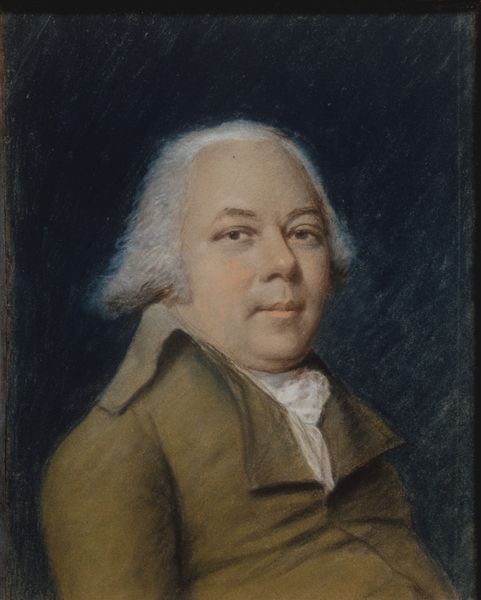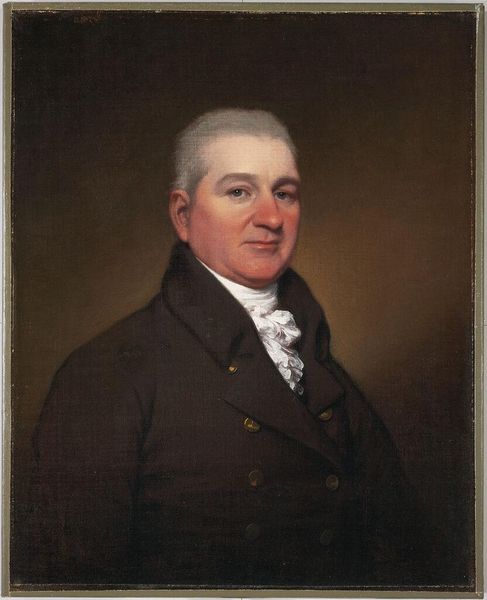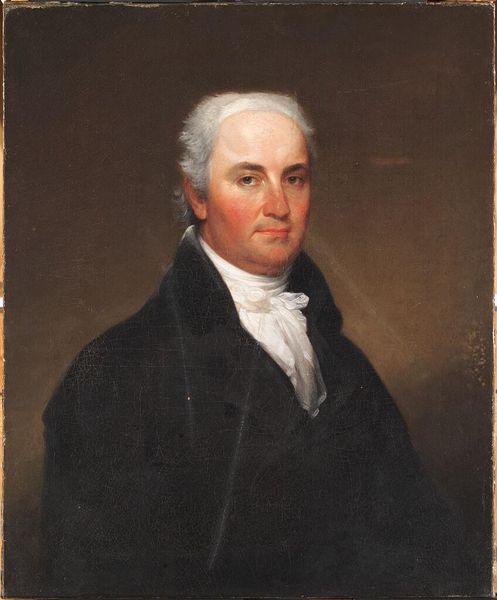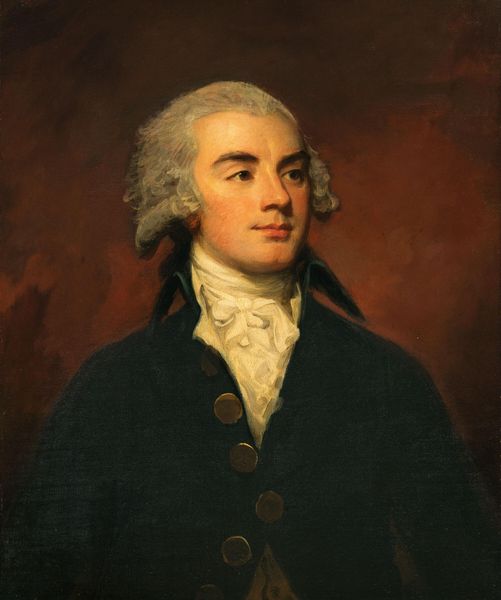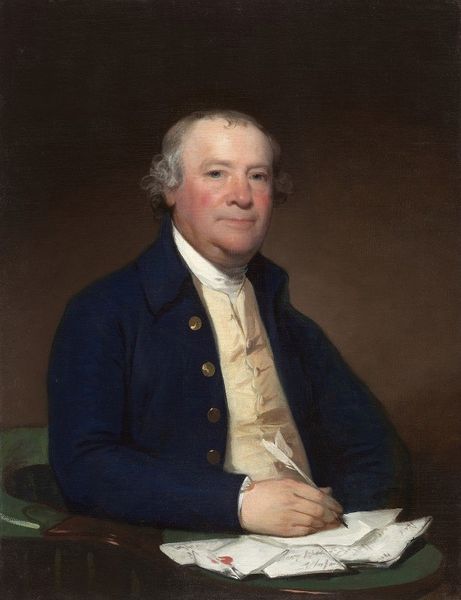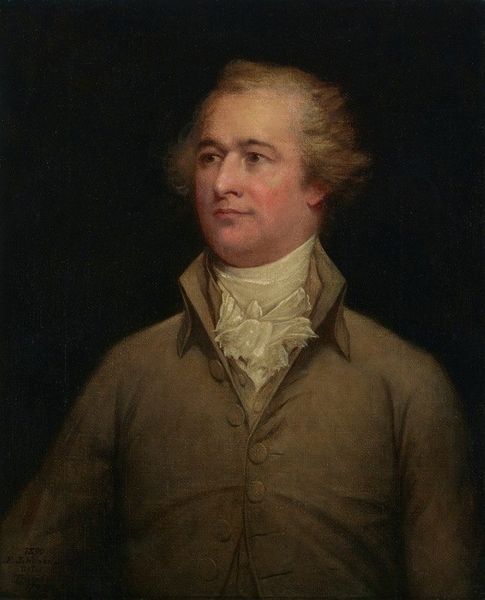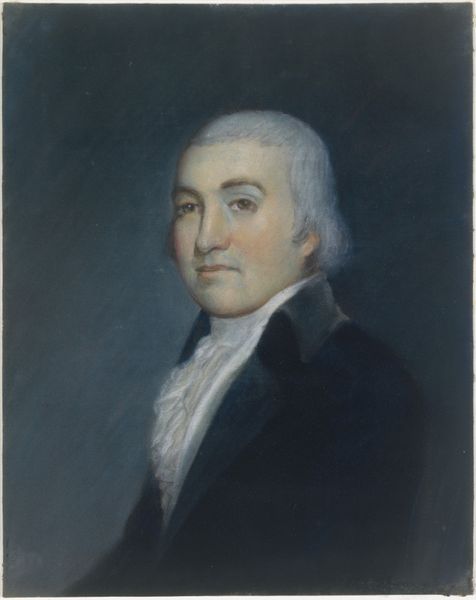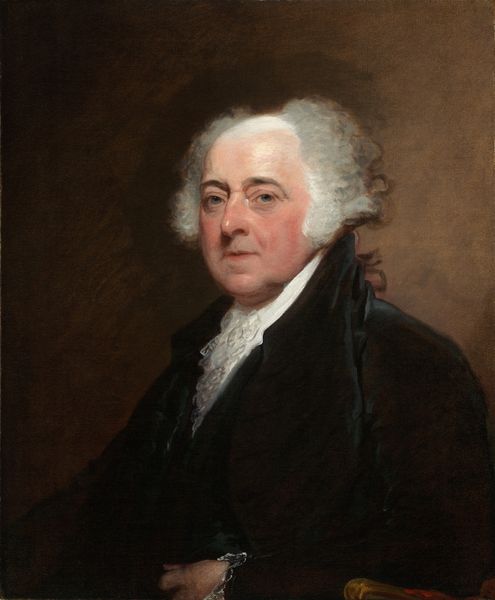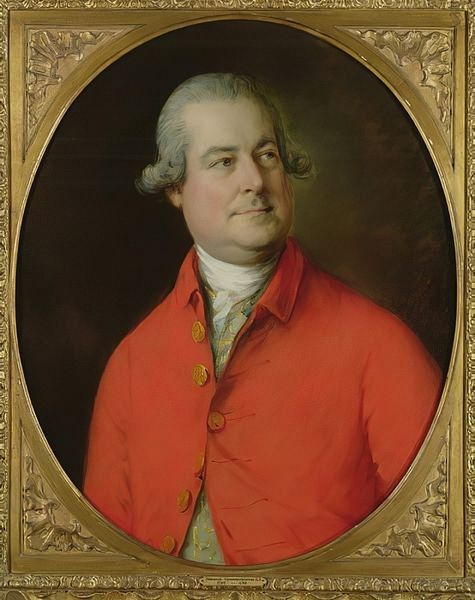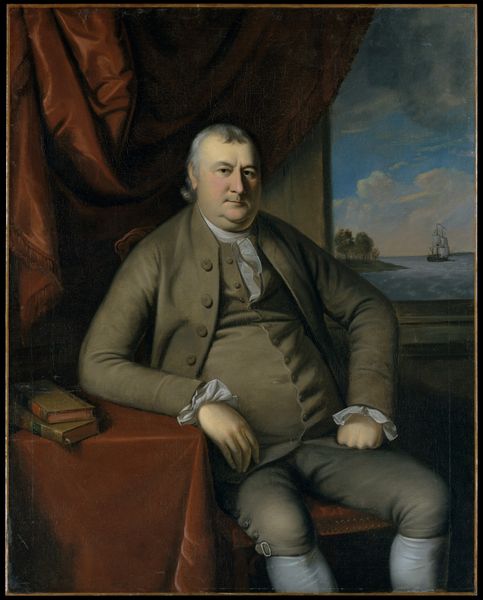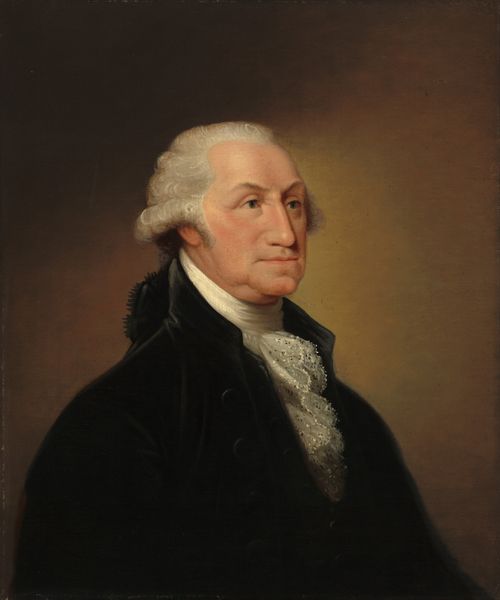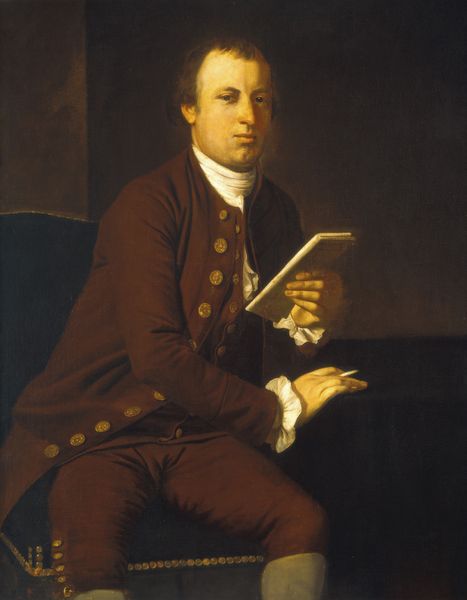
painting, oil-paint, oil-on-canvas
#
portrait
#
baroque
#
painting
#
oil-paint
#
academic-art
#
oil-on-canvas
#
portrait art
Dimensions: 29 1/4 x 23 1/2 in. (74.3 x 59.69 cm) (canvas)36 1/2 x 31 3/8 x 2 1/2 in. (92.71 x 79.69 x 6.35 cm) (outer frame)
Copyright: Public Domain
Editor: Here we have a painting from the 18th century, titled "Portrait of Captain Enos Reeves." It’s an oil on canvas. I'm struck by how… straightforward it is. There's a real emphasis on presenting this man and his status. What do you see in it? Curator: Well, let's consider the materiality. Oil paint allowed for the smooth blending of tones we see here, crucial for conveying Reeves's affluent status through refined portraiture. The canvas itself, a costly material at the time, signifies wealth and patronage. But how does the portrait actively participate in constructing that status, given these materials? Editor: So, beyond just using expensive materials, you're saying the way they’re used matters? Like, the smoothness of the paint… Curator: Exactly. It's about the labor and skill involved in manipulating these materials. Consider the layering of paint to achieve that skin tone, or the precise rendering of the ruffles. This wasn't just about representation; it was about demonstrating the artist's mastery and Reeves's ability to commission such work. The act of consumption is right there, displayed through artistic labour. What’s the relationship to the artist's choices here? Editor: It's interesting to think about the artist being part of that economic exchange, their skill directly contributing to the display of wealth…It almost feels transactional, but artistic at the same time. Curator: Precisely. This wasn't just artistic expression; it was skilled labor deployed in service of social positioning. The portrait itself becomes a commodity, embodying the relationship between Reeves, the artist, and the broader economy of the 18th century. How would you characterize Reeves's power within the portrait? Editor: That shifts my understanding quite a bit. I was just seeing a portrait, but now I’m seeing the product of many hands, a display of resources and skills. Curator: Exactly! Thinking about art through its material origins and its context really changes how we understand its purpose and meaning.
Comments
No comments
Be the first to comment and join the conversation on the ultimate creative platform.
